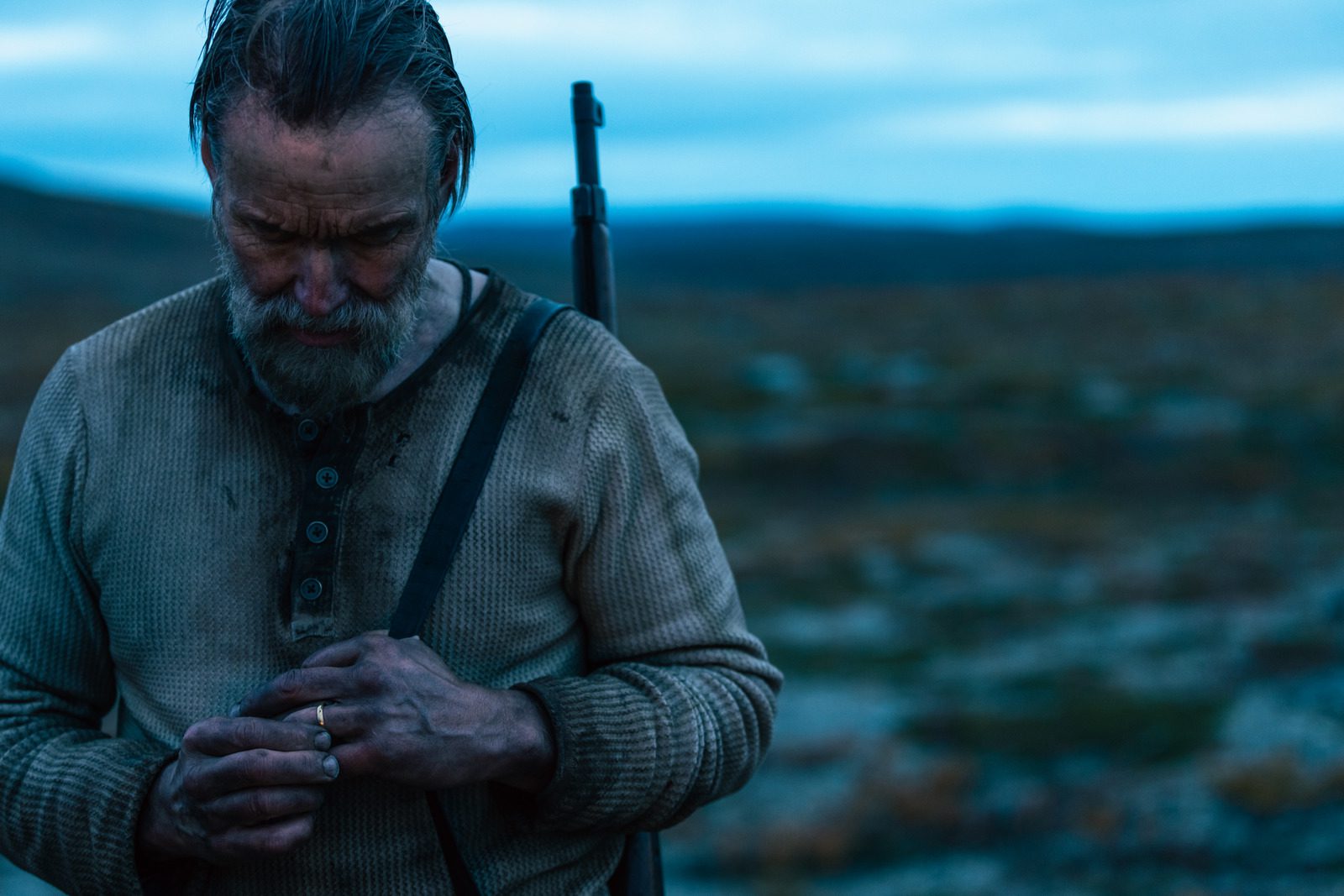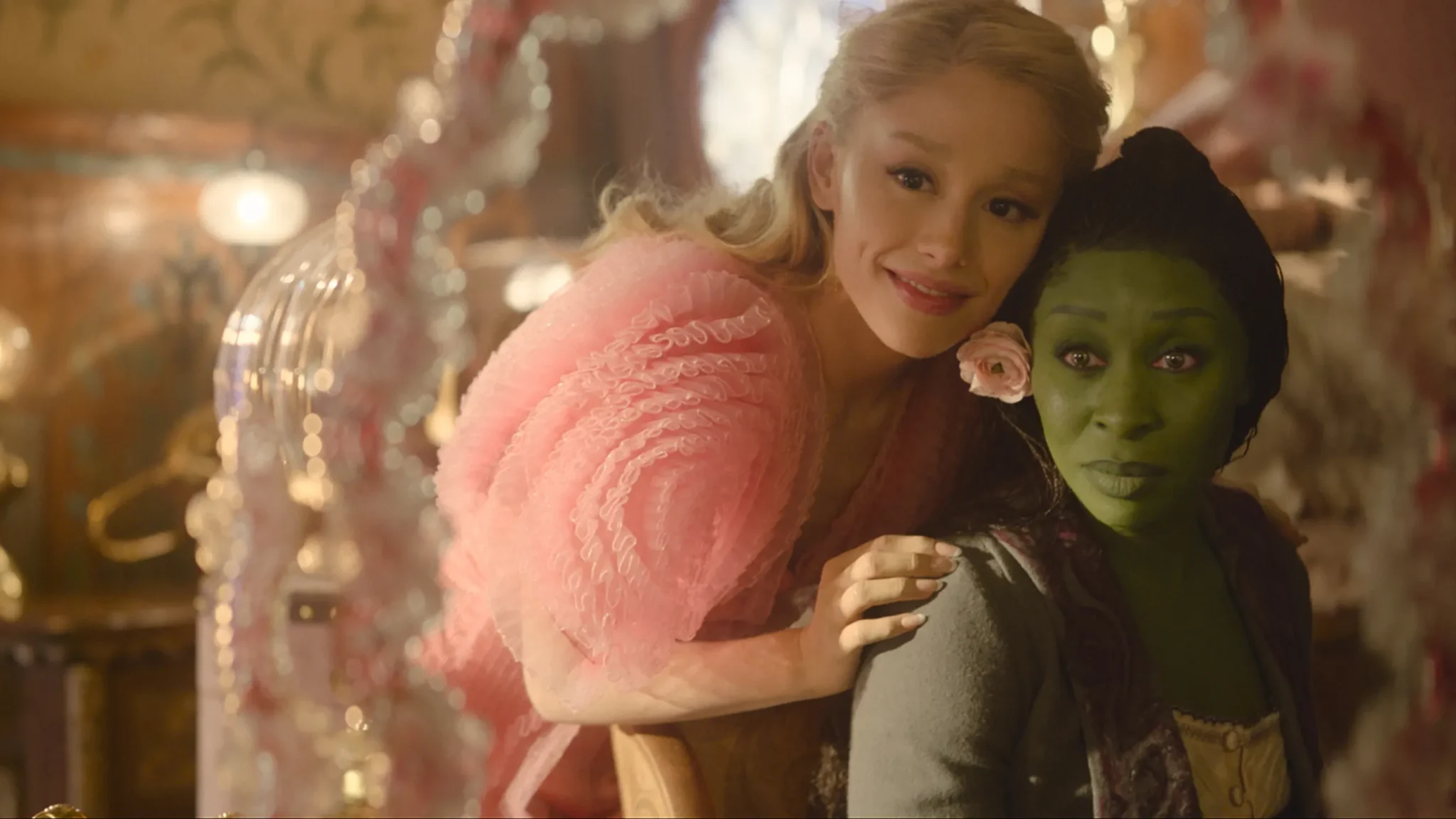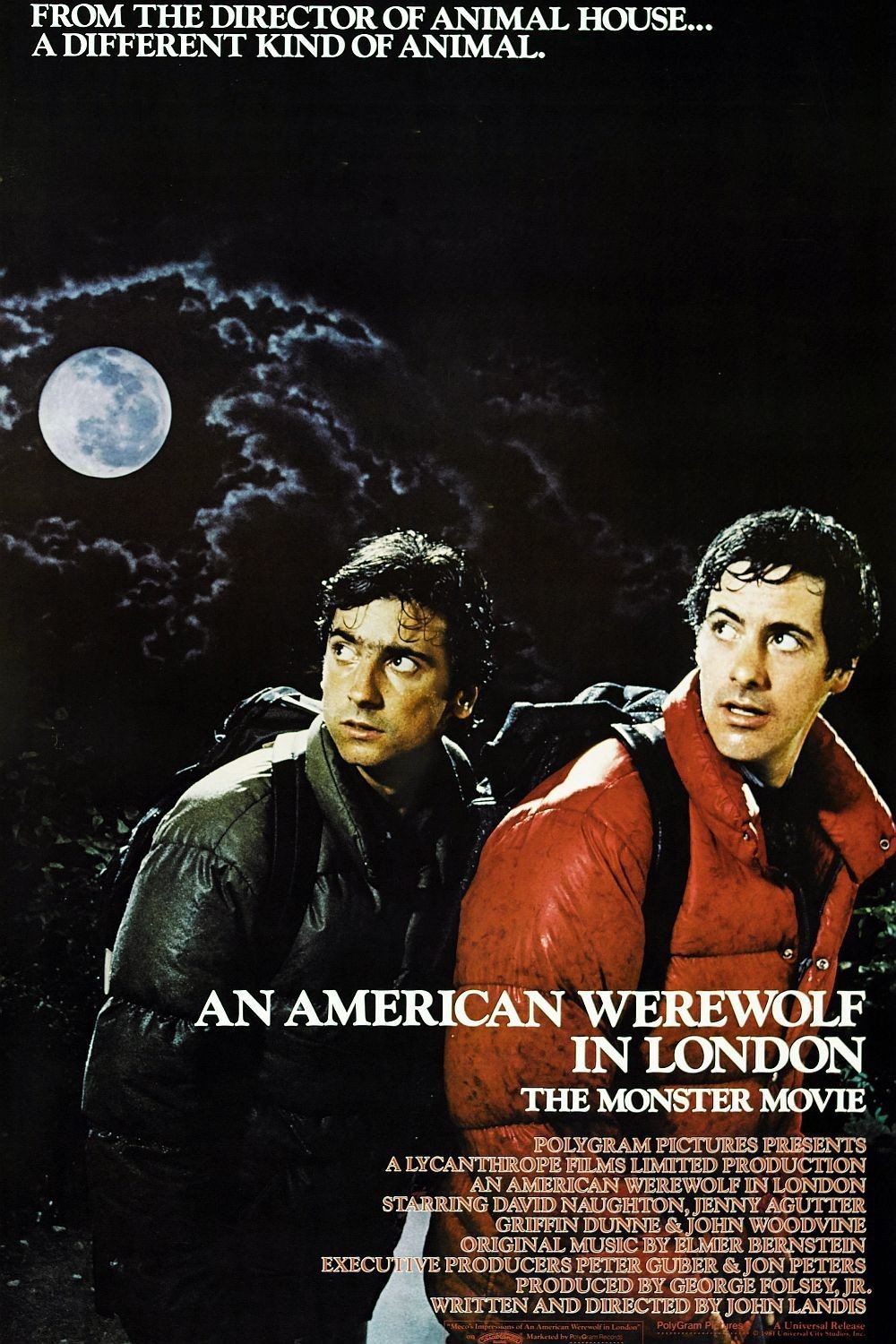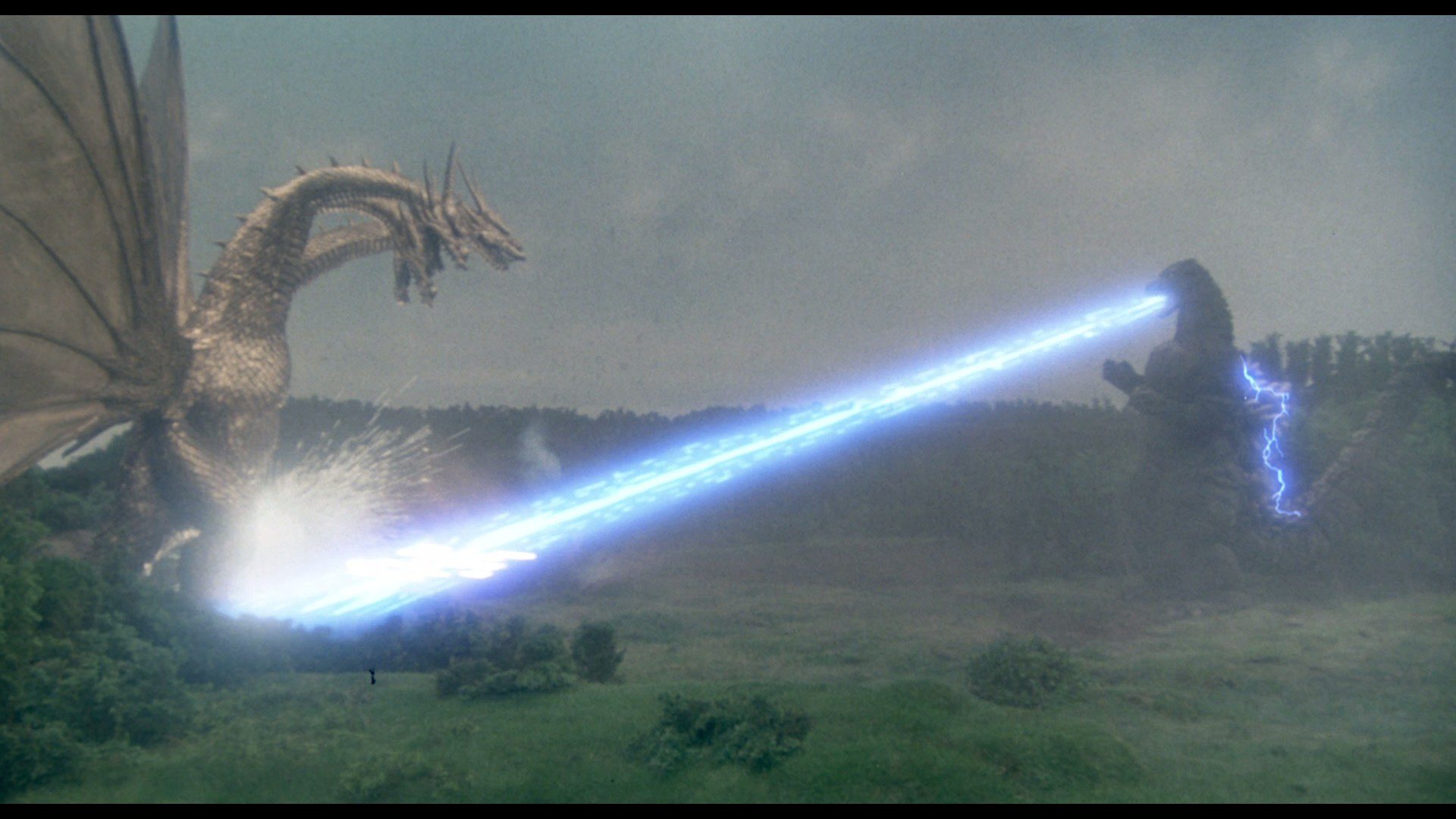
By Ben Dower
In 1992, writer Kenichiro Teresawa (K?suke Toyohara) is working on a book called?The Birth of Godzilla, which details his theory that a dinosaur on Lagos Island that saved a Japanese unit during WWII was irradiated by H-bomb tests and turned into Godzilla.
A time machine from the 23rd century appears in Japan and onboard are Wilson (Chuck Wilson), Glenchiko (Richard Berger), and Emi Kanno (Anna Nakagawa), as well as several androids, including one called M-11 (Robert Scottfield). The Futurians warn that Godzilla will soon destroy Japan and offer to go back in time to prevent the monster?s creation.
Emi and M-11 go back to 1944, taking with them Teresawa, Miki Saegusa (Megumi Odaka), and Professor Masaaki (Katsuhiko Sasaki), and witness the dinosaur battle U.S. forces on Lagos Island, saving the Japanese unit on the island. The unit, led by Yasuaki Shindo (Yoshio Tsuchiya), pays their respects to the injured dinosaur and leaves the island. M-11 teleports the dinosaur away from the island and Emi secretly release three small creatures called Dorats there. Upon their return to the present, Wilson and Glenchiko inform them that Godzilla is gone, but a new monster has appeared: King Ghidorah.
King Ghidorah attacks Fukuoka, devastating the city and nearly killing Yasuaki Shindo, who is now a very successful businessman. It turns out Wilson and Glenchiko are controlling King Ghidorah, which was once the three Dorats, and want to use him to prevent Japan from ascending to economic world dominance. Emi, not realizing the full extant of Wilson and Glenchiko?s plan, reprograms M-11 in a mission to stop them.
Teresawa does some investigating and finds out a nuclear submarine sunk in the area they had teleported the dinosaur too, creating Godzilla anyways. Godzilla emerges in Hokkaido and the Futurians send King Ghidorah to attack him. Emi, M-11, and Teresawa destroy the computer being used to control King Ghidorah, giving Godzilla the upperhand. They then teleport the time machine to Godzilla, who destroys it, killing Wilson and Glenchiko. Godzilla blasts King Ghidorah with his atomic breath, sending the dragon plummeting into the ocean, and then attacks Sapporo.
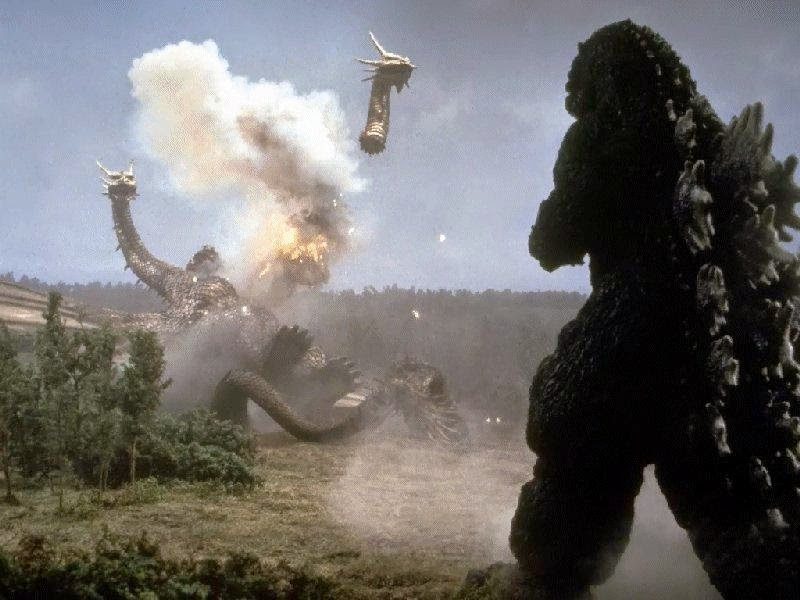
Emi goes back to the 23rd century and turns the remains of King Ghidorah into a giant cyborg called Mecha-King Ghidorah. She brings Mecha-King Ghidorah back to 1992 and confronts Godzilla in Shinjuku, Tokyo, eventually carrying the monster out to sea. She ditches Godzilla and Mecha-King Ghidorah in the ocean and heads back to 23rd century.
Godzilla vs. King Ghidorah is a fascinating if somewhat muddled movie. While The Return of Godzilla (1984) and Godzilla vs. Biollante (1989) had been rather serious scifi films, Godzilla vs. King Ghidorah injects much of the classic 1960s-style fun back into the series, and brings back arguably Godzilla?s most popular foe in the process. The movie also maintains Godzilla?s core anti-nuclear themes while addressing Japan?s incredible post-war economic rise.
Composer Akira Ifukube returns to score his first Heisei Godzilla series film. Ifukube had scored around half of the Showa Godzilla series films, including Godzilla (1954), as well as a lot of Toho?s other monster films. His familiar musical cues for the monsters really add to the classic feel of this movie.
For his return to the big screen for the first time since the 1970s, King Ghidorah was given a makeover and all-new origin. The new look is a rather simple but nice update of the Showa design, with horns replacing the hair behind each of the heads and spikes added to the two ends of the tail. The new origin, in which King Ghidorah is the result of three small genetically engineered creatures mutating and fusing after exposure to an H-bomb test, is much more complicated than in the Showa series, and quite frankly just doesn?t work as well.
Godzilla also gets a revised origin, albeit a little less so than King Ghidorah. In 1954, the big concern was nuclear weapons, but by the 1990s, nuclear energy was being used for all sorts of things and there had been a handful of nuclear accidents. In Godzilla vs. King Ghidorah, Godzilla being recreated after his removal from history through an accident involving a nuclear submarine is not just a warning against nuclear weapons, but also a warning against our increasing use of nuclear energy in our everyday lives.
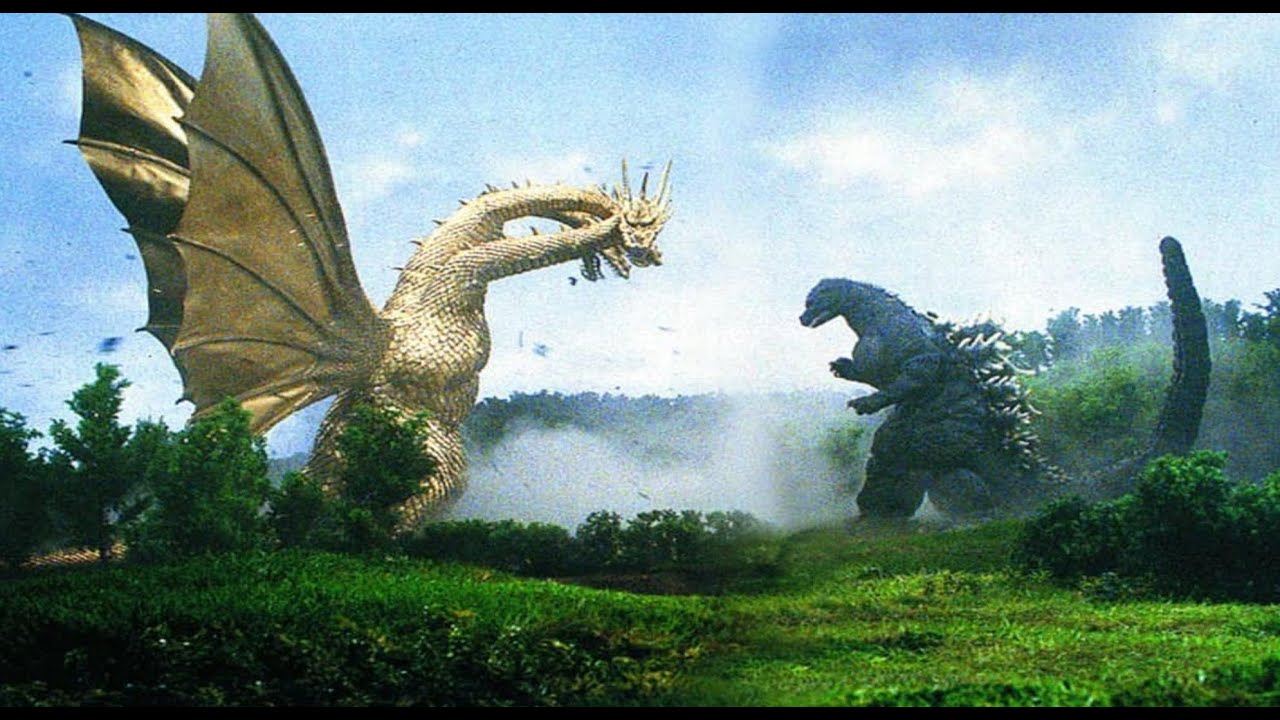
Godzilla vs. King Ghidorah looks at Japan?s economic growth in the years since the war, particularly through the character of Yasuaki Shindo. When the war ended in 1945, Japan was completely devastated. By the mid-1980s, just four decades later, Japan was an economic powerhouse, with the Nikkei hitting its peak in late 1989. By the time Godzilla vs. King Ghidorah hit theatres on December 14, 1991, the Japanese bubble economy had begun to burst. Yasuaki Shindo is a World War II soldier turned businessman who helped rebuild Japan to prosperity in the decades after the war, only to live long enough to see Godzilla, the same creature who had saved him in 1944, begin to destroy everything he had worked for.
Godzilla vs. King Ghidorah sparked controversy in the United States upon its release in Japan due to its portrayal of Westerners trying to sabatoge Japan?s success and Godzillasaurus slaughtering U.S. soldiers on Lagos Island. Tensions were high between Japan and the United States at the time due to Japan?s economic strength and some American news outlets ran stories about the film.
Toho had Godzilla vs. King Ghidorah dubbed into English in Hong Kong and the film was released to VHS and DVD in North America in 1998 by Columbia TriStar Home Video. Both the VHS and DVD offer an English dubbed full screen version of the film that cuts off the end credits, which featured video of Godzilla under the sea. To make matters worse, the DVD is a double-sided disc with Godzilla vs. Mothra (1992), making it difficult to handle and easy to get dirty or damaged.
In 2014, Godzilla vs. King Ghidorah was released to Blu-ray in a double-feature set with Godzilla vs Mothra (1992) by Sony Pictures Home Entertainment. Fortunately, both films get separate discs this time around, and are presented in widescreen with the original Japanese audio and English dub as audio options, though the end credits are still truncated. All North American releases of Godzilla vs King Ghidorah are currently out of print.
FeaturesFilmReviewsVOD

